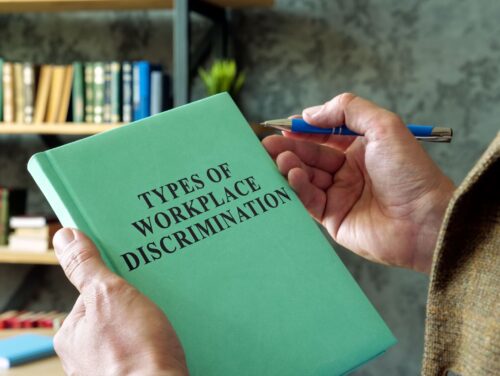Being treated fairly and equally at work is an employee’s basic right, and is a lawful requirement based on the 2010 Equality Act. As a result of this a person has protected characteristics which mean they can’t be treated more or less favourably than somebody else.
Discrimination comes in several forms, such as direct discrimination, indirect discrimination, harassment, victimisation and a duty to make reasonable adjustments. These all manifest themselves in different ways in the workplace. The Equality Act prohibits discrimination in the workplace on grounds of race, age, sex, sexual orientation, gender reassignment, disability, pregnancy, religion and whether married or in a civil partnership, or not. These grounds for discrimination are evidenced in many different workplace scenarios, such as recruitment, training, employment terms and conditions, salaries and benefits, promotions and transfers, redundancy and dismissal.
So let’s look at five common examples of where discrimination can occur in the workplace:
-
Made redundant because you are pregnant
A redundancy process can be stressful and complex, and it has to be done correctly and following a formal and open process of consultation. A business may ask for volunteers for redundancy but doesn’t have to, but if they issue a list of people who have been nominated for redundancy, this has to be seen as fair and the nominees are entitled to ask what the selection process and criteria involved. If a pregnant woman finds herself nominated for redundancy when, for example, another person of similar abilities and experience was overlooked, they could ask whether this process was discriminatory. If a pregnant woman is likely to be absent on maternity leave for a period of time, this should not be held against them nor should any impact on work by reason of the maternity leave
-
Dyslexic person overlooked for promotion
If a person is offered a promotion, but a person they work alongside is not, the person who has been overlooked is entitled to ask why this was. If this person was dyslexic, for example, it is possible that the manager has used this disability against them as a form of discrimination. The employee with dyslexia can argue that they have demonstrated and evidenced a capability of working adequately alongside the other colleague and that the business knew about the dyslexia when they were appointed. The employer must then prove that the dyslexia was not a discriminatory factor in the employee not being offered a similar promotion.
-
Harassment related to disability
An employee suffers from a physical disability. His colleagues make comments mocking his appearance as banter. If the employee is caused offence and upset by the comments, then he would have a claim for harassment.
-
Older person overlooked for training opportunities
If training opportunities were offered to employees with a view to using new technology and an older person was overlooked for this, they would be entitled to ask why. An employer needs to be able to justify why the older person was not chosen for the training, because age should not be a barrier to a person wanting to learn new skills and they should not be denied the opportunity.
-
Victimisation because of sexual orientation
A gay man raises a grievance to his manager about a colleague harassing him. The following day he is demoted and told that it is because he is a “troublemaker”.
Help and advice with discrimination at work from employment law professionals
If you have been the victim of a form of discrimination at work, or you think you have been, then contact our employment law department at Ison Harrison today. We have experience of dealing in all forms of discrimination and workplace disputes and we will listen to your story and advise on your likelihood of pursuing a successful case. Our team of compassionate legal experts understand that you have been through a stressful and challenging experience, and we will help you make the right decisions and move forward in the best way possible, so get in touch with our team today.
















